
Berkeley County is located in the Shenandoah Valley in the eastern panhandle region of West Virginia in the United States. The county is part of the Hagerstown–Martinsburg metropolitan area. As of the 2020 census, the county population was 122,076, making it the second-most populous of West Virginia's 55 counties, behind Kanawha County. The City of Martinsburg is the county seat.

Shepherdstown is a town in Jefferson County, West Virginia, United States, located in the lower Shenandoah Valley along the Potomac River. Home to Shepherd University, the town's population was 1,531 at the time of the 2020 census. The town was established in 1762 along with Romney; they are the oldest towns in West Virginia.
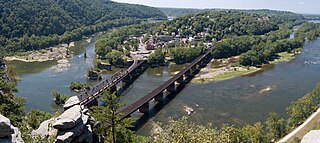
Harpers Ferry National Historical Park, originally Harpers Ferry National Monument, is located at the confluence of the Potomac and Shenandoah rivers in and around Harpers Ferry, West Virginia. The park includes the historic center of Harpers Ferry, notable as a key 19th-century industrial area and as the scene of John Brown's failed abolitionist uprising. It contains the most visited historic site in the state of West Virginia, John Brown's Fort.
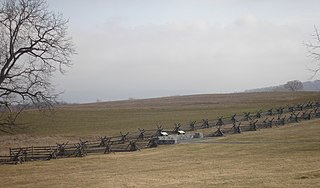
Antietam National Battlefield is a National Park Service-protected area along Antietam Creek in Sharpsburg, Washington County, northwestern Maryland. It commemorates the American Civil War Battle of Antietam that occurred on September 17, 1862.
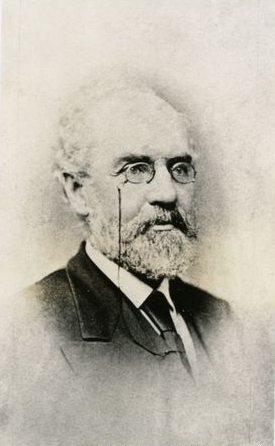
Alexander Robinson Boteler was a nineteenth-century planter turned businessman, as well as artist, writer, lawyer, Confederate officer, philanthropist and politician from Shepherdstown in what was initially Virginia and became West Virginia in the American Civil War.
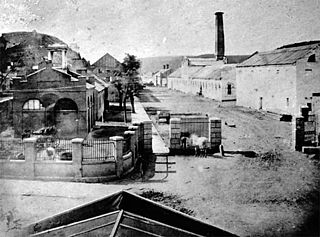
The Harpers Ferry Armory, more formally known as the United States Armory and Arsenal at Harpers Ferry, was the second federal armory created by the United States government; the first was the Springfield Armory. It was located in Harpers Ferry, Virginia, which since 1863 has been part of West Virginia. It was both an arsenal, manufacturing firearms, and an armory, a storehouse for firearms. Along with the Springfield Armory, it was instrumental in the development of machining techniques to make interchangeable parts of precisely the same dimensions.
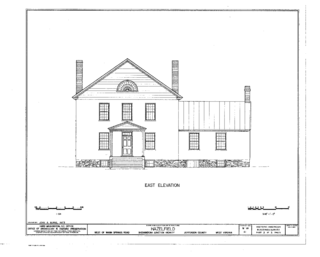
Hazelfield, located near Shenandoah Junction, West Virginia is a historic farm, whose principal residence was built in 1815 for Ann Stephen Dandridge Hunter.

Harewood is one of several houses in the vicinity of Charles Town, West Virginia built for members of the Washington family.
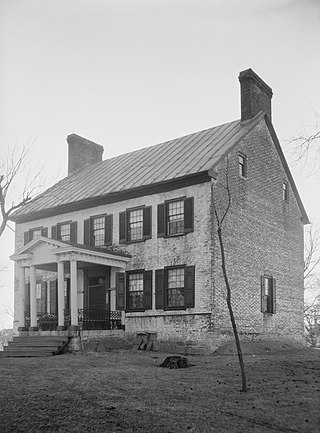
Elmwood is a Federal style house near Shepherdstown, West Virginia. Located on land claimed in 1732 by Edward Lucas II, it was built in 1797 by his son, Edward Lucas III. During the Civil War the house was used as a field hospital. It remained in the Lucas family until 1948.

Beverley, also known as Bullskin, is a farm near Charles Town, West Virginia that has been a working agricultural unit since 1750. The narrow lane that leads from U.S. Route 340 to the Beverley complex was, in the 18th and 19th centuries a toll road. The main house was built about 1800 by Beverley Whiting on the site of a c. 1760 stone house. The house is Georgian influenced Federal style, with a later Greek Revival portico. A number of outbuildings dating to the original 1760 house accompany the main house.

Falling Spring at Morgan's Grove is part of a related complex of buildings and lands associated with the Morgan family and other prominent members of the Shepherdstown, West Virginia, community.
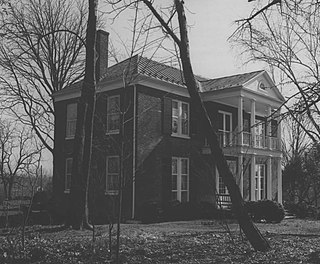
The Morgan-Bedinger-Dandridge House — first known as Poplar Grove, then Rosebrake or Rose Brake — is part of a group of structures affiliated with the Morgan's Grove rural historic district near Shepherdstown, West Virginia. The property was known as "Poplar Grove" until 1877.

The Jefferson County Courthouse is a historic building in Charles Town, West Virginia, USA. The building is historically notable as the site of two trials for treason: that of John Brown in 1859, and those of unionizing coal miners from Mingo County, West Virginia, a consequence of the Battle of Blair Mountain, whose trials were moved from the southern part of the state in 1922 as a result of a change of venue. It was designated a National Historic Landmark in 2023 for its role in the mining wars.

Traveller's Rest, also known as the General Horatio Gates Home, is an historic plantation house located on Bowers Road near Kearneysville, Jefferson County, West Virginia. Built in 1773 and enlarged a few years later, it was the home of Continental Army General Horatio Gates from 1773 until 1790. The house is very little altered from that period, and was designated a National Historic Landmark in 1972. The house is located on private property, and is not normally open to the public.

Mount Airy, also known as Grove Farm, is a historic home located at Sharpsburg, Washington County, Maryland, United States. It is a 2+1⁄2-story Flemish bond brick house, built about 1821 with elements of the Federal and Greek Revival styles. Also on the property are a probable 1820s one-story gable-roofed brick structure that has been extensively altered over time, a late-19th-century frame barn with metal roof ventilators, a 2-story frame tenant house built about 1900, and a mid-20th-century cinder block animal shed. It was used as a hospital for Confederate and Union soldiers following the Battle of Antietam. On October 3, 1862, President Abraham Lincoln and General George McClellan visited Mount Airy, an event recorded photographically by Alexander Gardner.
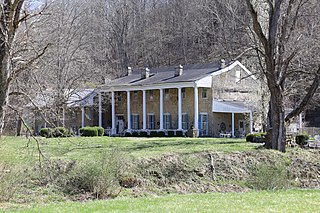
Salt Sulphur Springs Historic District is a national historic district located at Salt Sulphur Springs, near Union, West Virginia, Monroe County, West Virginia. The district includes seven contributing buildings, three contributing sites, and two contributing structures related to the Old Salt Sulphur Springs Resort or "Old Salt." Notable properties include the Old Stone Hotel, Episcopal Chapel, Stone Store Building (1820), Stone Bath House (1820), Stone Spring House, Sweet Sulphur Springs Site, Salt Sulphur Spring, and Iodine Spring (1838). It is the area's most significant collection of native limestone buildings.

Union Historic District is a national historic district located at Union, Monroe County, West Virginia. The district includes 174 contributing buildings, 2 contributing sites, 7 contributing structures, and 1 contributing object in the Union and surrounding areas.
The Civil War Trust's Civil War Discovery Trail is a heritage tourism program that links more than 600 U.S. Civil War sites in more than 30 states. The program is one of the White House Millennium Council's sixteen flagship National Millennium Trails. Sites on the trail include battlefields, museums, historic sites, forts and cemeteries.

Morgan's Grove Park is located in Shepherdstown, West Virginia, United States, and shares a history dating back to the 18th century and Morgan's Grove, from which the historic park got its name.

William Augustine Morgan was a Virginia planter from Shepherdstown who became a Confederate States Army cavalry officer throughout the American Civil War, then represented Jefferson County at the West Virginia Constitutional Convention of 1872 and served as the county's deputy sheriff for 26 years.






















